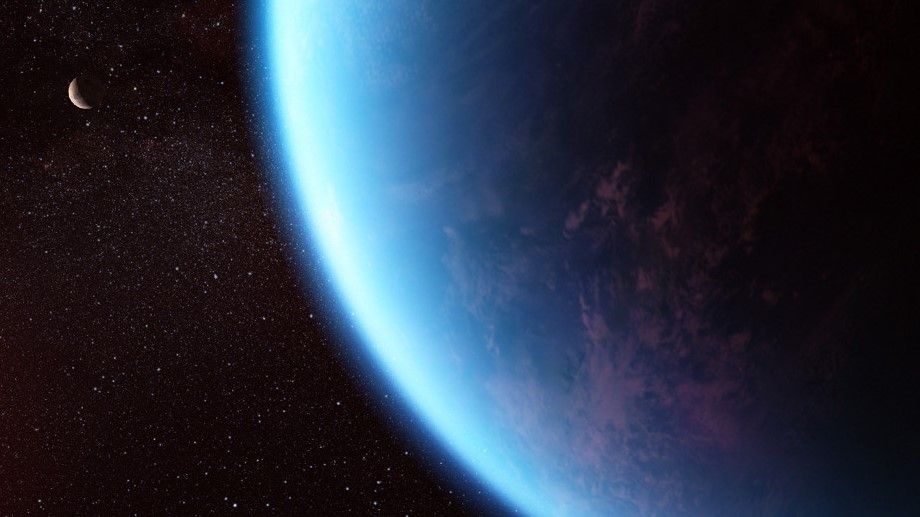Exoplanet's surface may be covered in oceans, James Webb Space Telescope finds [View all]
By Robert Lea published about 12 hours ago
The so-called Hycean planet K2–18 b is around twice the size of Earth and orbits in the habitable zone of a star located 120 light-years from our solar system.

An illustration of the exoplanet K2–18 b, which dwells in the habitable zone of its star and is now known to have carbon-based molecules in its atmosphere. (Image credit: NASA, ESA, CSA, Joseph Olmsted (STScI))
The James Webb Space Telescope (JWST) has discovered evidence of carbon-based molecules in the atmosphere of a suspected ocean world.
The extra-solar planet or exoplanet known as K2–18 b is a tantalizing target for astronomers as they search for life beyond the solar system, as previous research and observations with the Hubble Space Telescope have indicated that the planet could be an ocean or "Hycean" world replete with liquid water — a vital ingredient for life. K2–18 b has a radius between two and three times larger than Earth's and located 120 light-years away from the solar system.
The new results showed traces of carbon dioxide and methane in K2–18 b's atmosphere without detecting ammonia, which likely indicates a water ocean under a hydrogen-rich atmosphere.
"Our findings underscore the importance of considering diverse habitable environments in the search for life elsewhere," research lead author and University of Cambridge scientist Nikku Madhusudhan said in a statement. "Traditionally, the search for life on exoplanets has focused primarily on smaller rocky planets, but the larger Hycean worlds are significantly more conducive to atmospheric observations."
More:
https://www.space.com/james-webb-space-telescope-exoplanet-atmosphere-carbon-dioxide-methane
